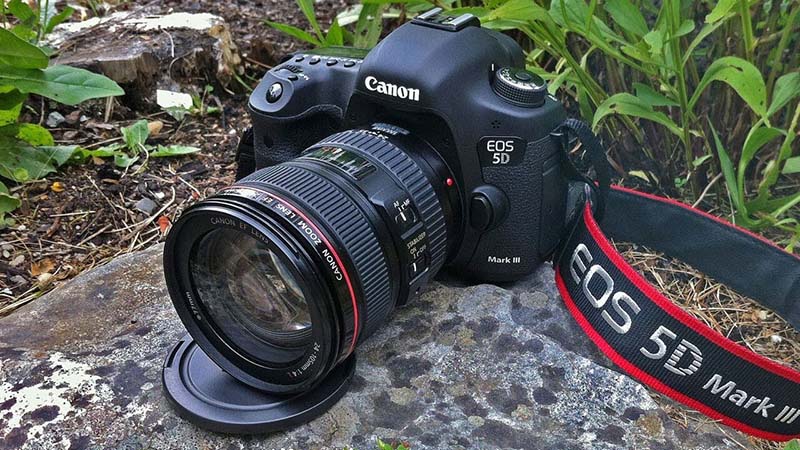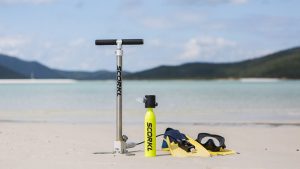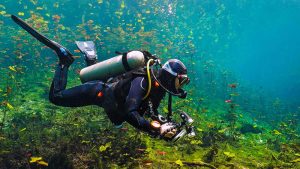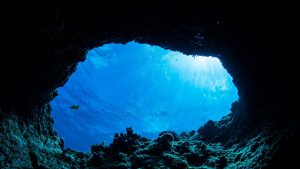Canon EOS 5D III is a true superstar for the well-heeled amateurs who are into action video shooting. They have amazing capabilities that satisfy the needs of both learners and professionals equally. Canon EOS 5D III review helps you to understand why this waterproof full-frame digital camera is best suited for travelers.
In the series of 5D, this camera comes with many improvements, especially with the output quality and image resolution. Compared to its predecessors, this one is an easy upgrade; hence there is no need to struggle while handling this camera.
If you remember, the Canon EOS 5D DSLR was the first camera that was affordable for people who considered them as a far-fetched dream. The 5D Mark II was incredible with the 21.1 Full-frame sensors, and now the value is continuing with the 5D Mark III. It is powerful, accurate with great control, and user-interface configuration. Since you can take it while your water activities, it is considered as the best waterproof camera for scuba diving.
Here is the review that helps you to understand why 5D III must hit your shelf right now.
Table of Contents
Key Specifications
- 22.3 MP with Full-Frame CMOS sensor
- Live view featured with Dual Pixel CMOS AF
- ISO 100 – 25600 Expansion available up to 1, 02,400
- 3.2-inch LCD screen display with a clear view of 1, 04.000 dots
- 61 AF Points
- Excellent HDR mode
- Multiple picture styles
- 3FPS in Quite Shooting mode and 3FPS in Burst shooting
Design
The body of Canon EOS 5D III is made of magnesium alloy and polycarbonate construction. It is one of the main reasons why they are rugged and much suitable for travel. The weatherproofing nature of this camera is better than the MK II version of Canon. The camera looks considerably large with the maximum grip.
The area of finger grip is made of rubber-like coating that offers guarantee when you change the hands. It feels secure as you grasp and contours the front and rear. It is comfortable to hold even though the body is made of heavy alloys. They do not squeak your hands even when you handle them tightly.
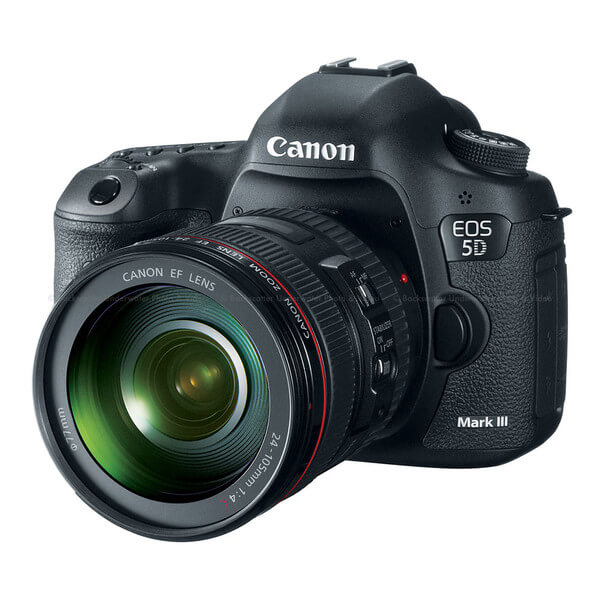
Here in 5D III, there is a pentaprism lump on the top, which helps when the camera is working in the Autofocus module. It is the most rounded part of the camera, which guarantees a complete view during live coverage. The video switch buttons are in the easy reach to the right thumb. Hence the transmission becomes easy.
You can also find there are two new buttons in this Canon 5D III camera. The first button provides access to three different creative options: HDR modules, Picture styles, and multiple exposures. Out of them, multiple exposures are a favorite pick for the photographers as one can combine up to nine images in one frame.
The other button is for you to rate the images. In playback mode, one press means one-star rating; two are two stars, and so on. It is fun and interesting while these are stored in the EXIF data and useful when you open them in Adobe Bridge or Photoshop. It is especially helpful for people who take the test shots before the actual shoot.
Autofocus
Further, in the Canon EOS 5D III review, we will be discussing the most advantageous feature, which is wide-area autofocus. The system may range up to 61-Point, which is the flagship of Canon. This feature is similar to the Canon EOS-1D X, while there is certainly another additional improvement available.
The AF in this camera comes in the nine users’ selectable option, apart from the six-assist points, which is available as default that makes a total of 15 AF options in total.
If you can breathe underwater with the snorkel, you can capture the marvelous images of the underwater scenery. Undoubtedly, accuracy is higher with the 61 Points that are the combination of cross-type and dual-core systems. It helps in shooting in a more challenging environment. But to learn the sport and fast-moving action scenes, you need to master the AF options from the Canon 5D III camera.
The AF uses AI Servo technology in Mark III that is characterized by the tracking sensitivity. One can easily accelerate or decelerate the tracking points of AF without switching the points. The AI uses smart sensors to capture and focus on the fast-moving subjects accurately.
Display
Canon Mark III brings a 3.2-inch LCD screen that offers a 1,04,000-Dot Clear view. The Canon has been using this screen feature since EOS-1DX, but it has an incredible response. The optical gel is placed between the glass cover and LCD, which balances the reflections. Thus, the display is sharp, clean, and has a clear view even while shooting outdoors.
Performance
Canon always produces one of the best white balance systems, and its legacy followed in Mark III as well. The images are natural, and they can retain the elements from the background while shooting. The lens moves slowly, which is a new mechanism for reducing the noise while clicking pictures. Hence, it’s also highly recommended for people who are into wildlife photography.
Also, if you know technical diving, you can cover the best pictures in undersea and island. The burst shooting rate for this camera is 6FPS, while the normal shooting rate is available in 3FPS mode. While capturing the still images, Mark III has a Standard Picture Style option, which gives the maximum output. At the same time, there are other modes such as Monochrome, Neutral, Landscape, Faithful, and more, which provides the custom option.
Output
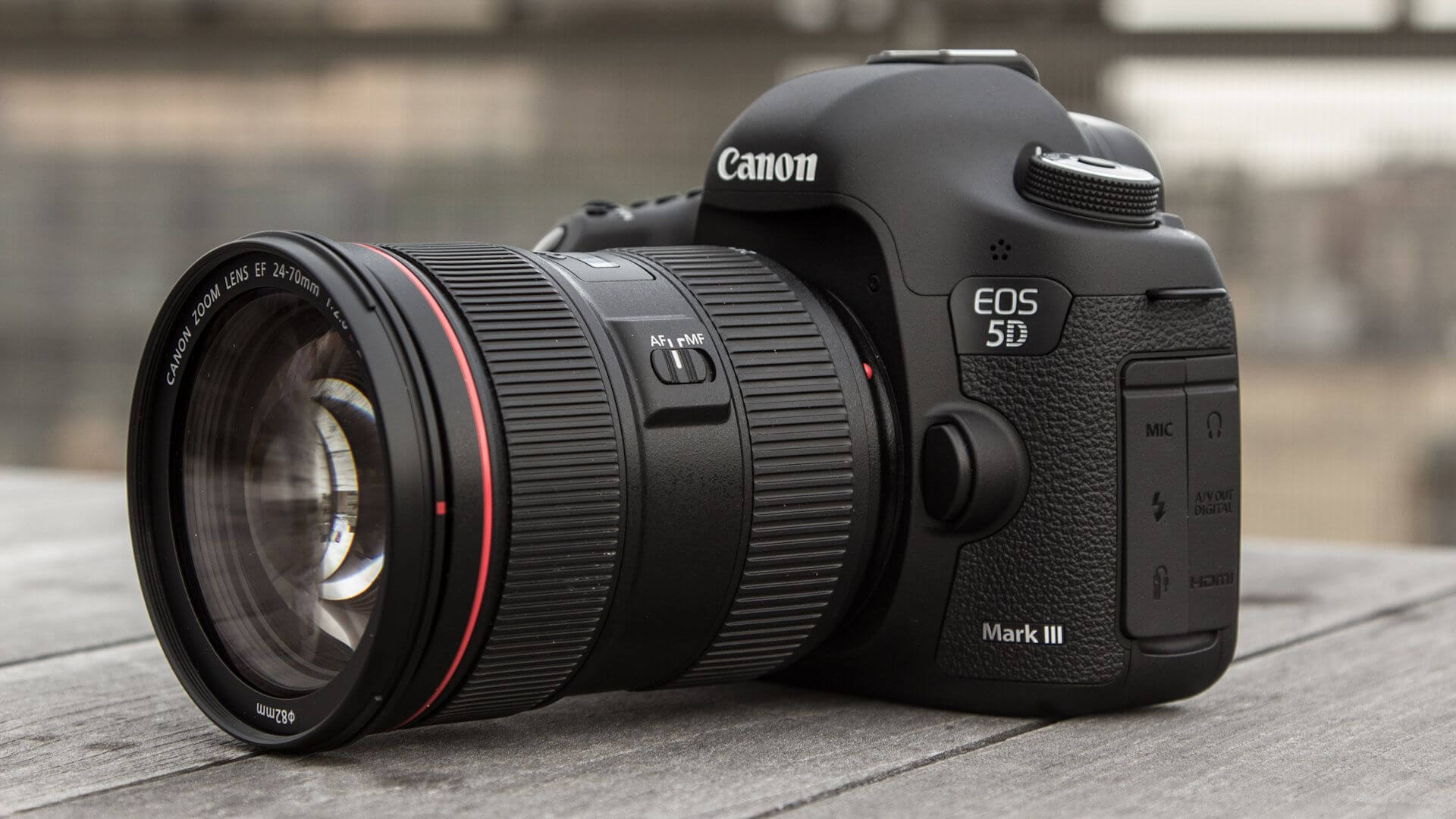
With the Canon EOS 5D III review, you might have understood the capabilities of this camera in the Mark series. It offers the class-leading pixel count in images that have a brilliant resolution. The pros and critics say that the competitor of the Mark III would be Nikon D810, which has most of the features the same as well as a result.
The Mark III has more space to store the images, and the sensitivity of the raw files are in line with the ISO800. But the JPEG sensitivity is pushed to ISO3200 or even higher. The dynamic range is higher when compared to many other cameras available in this range.
The sensitivity is automatically pushed to ISO12800 when captured in the dim lights. Also, the JPEG results are incredible at A3 Sizes. This camera is competent and efficient while rendering the images. There is no significant loss in the quality unless the sensitivity range is set below ISO 25,600. The images look respectable on a computer screen with a slight softening of some details.
Video
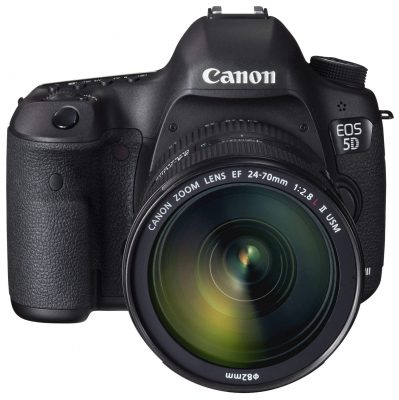
The Mark III has new sensors, images, and enhancements that help to host the videos with high quality. The Canon has worked on all the drawbacks of Mark II, such as noise level, audio, frame rates, and so on. As you start shooting, the camera enables you to control the aperture and ISO through touch-sensitive response. Therefore, there are no dial clicks involved while filming.
Mainly you don’t have to swap between the still and move live modes in settings. Here there is a dedicated button near the viewfinder, which helps you change to the single live view option. It is recommended to set the exposure before shooting for the amazing results.
Now that you know the reasons why you should buy this Canon EOS 5D III camera, if you are looking forward to buying this camera, click here.
Verdict
Even though there was no significant time difference between Mark II and III, Canon has still put a lot of thought and effort while building this camera. The results are amazing, and there are very minute changes that create a significant difference in the function.
Both the RAW and JPEG images are perfect, and noise is reduced to its minimum. With the higher native sensitivity and color exposure, Mark III gives the best output. The new HDR system is highly appreciable in the market.
The white balance, picture style, and iFCL metering are some of the unique features of this camera. All of these essential elements add up making EOS 5D Mark III as one of the top-end cameras in Canon, which is also available at affordable pricing.

